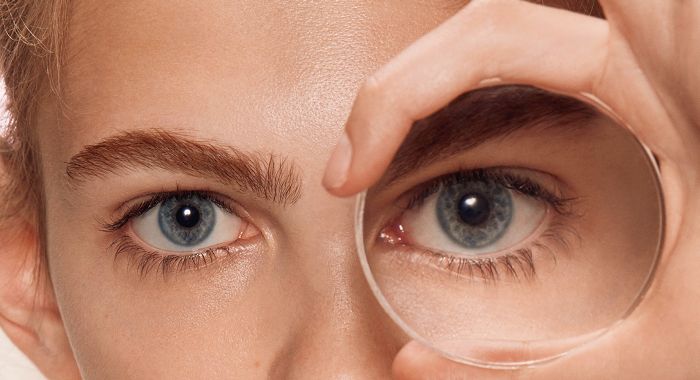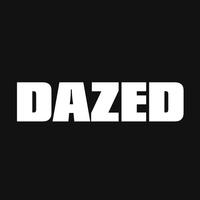The Moroccan-born, UK-based photographer and filmmaker tells us about a melting pot of influences that bridge both countries – from counterfeit designer goods to clubbing and the art world
Londoners will likely remember a large photograph pasted on the side of a building on City Road that featured a woman in a Louis Vuitton-printed niqab. Far from just another piece of London street art, it was created by Moroccan-born, London-based artist, Hassan Hajjaj. Dubbed “The Andy Warhol of Marrakech”, Hajjaj straddles the underground and mainstream art worlds and his work also included in major global institutions, such as New York’s Brooklyn Museum, London’s British Museum, and Los Angeles Museum of Contemporary Art, to name just a few. With a career spanning three decades, Hajjaj has also extended himself into sculpture, fashion and film – he recently relaunched his streetwear label, R.A.P London (which stands for Real Authentic People) and his first feature-length film, Karima: A Day in the Life of a Henna Girl, debuted at LACMA in 2015.
Born in Larache, Morocco in 1961, Hajjaj arrived in London in the 80s. One of his focus points was to depict a different side of homecountry than he believed the west perceived it. “Camels and mint tea; that’s all anyone used of to think of when I said Morocco”, he scoffs. His work in photography, design, film, fashion, and the club scene means that, like Warhol did, Hajjaj borrows from his rich and ever-evolving surroundings. “But”, he explains, “anyone can take a pretty picture, my work is always about the story and the people”.
His most well-known series, “Kesh Angels”, showed vibrant and enigmatic portraits of young women wearing veils and djellabah, with added Puma and Gucci branding, sitting astride motorcycles. The mixture of religious iconography, consumerism, and in-your-face branding was striking – and they were, delightfully, also turned into Barbie dolls. In the eyes of Hajjaj, he is just “showing the world as I know it” and photographing people that “are either friends with or I want to party with”. But, for many others, he is celebrated as an artist that subverts preconceived notions of the Arab world and provides a visual counter-narrative to the relationship between the east and west through his re-contextualisation of iconic imagery. Either way, his work is fascinating and we decided to chat to the self-taught artist himself.
How much do you think coming to London has informed your style?
Hassan Hajjaj: Coming to London after growing up in Morocco has given me a different point of view. When I am producing my work, I feel like I am able to look at various things from the outside, almost as if you are looking through a keyhole. When I used to tell my mates I was from Morocco in the 70s they just thought of camels, dates and drinking mint tea! So, to be honest, my work started because I wanted to show another side of Moroccan culture, something more than that, and the imagery that they’d understand in the same way.
Do you see your work as a re-contextualisation of Moroccan culture, for example, by putting it across in a way that a ‘Western’ audience understands?
Hassan Hajjaj: In the 90s, a friend of mine was doing a fashion shoot and asked me to help him because I spoke English. The photographer was American, the stylist from somewhere else – in fact, the whole team was foreign. Morocco was just the backdrop which frustrated me but also made me think. Rather than just using the country as the backdrop, I wanted to make it look grand. I wanted to take the Moroccan clothes and the people and shoot them in this celebratory way. At the time, I just wanted to share it with friends, though! I wanted to show off my country in the way that I perceived it.
There are a lot of symbols in your work, ranging from designer logos and supposedly religious ones, like the headscarf, is there a particular message behind this?
Hassan Hajjaj: Firstly, the headscarf is not always religious. Now, in the west, it is always seen as such, but the origins of it are not solely Islamic. People are just reading into it and making their own assumptions of the work. For me, it is all very Moroccan with the bright colours and the strong patterns that play on busy textiles. Actually, that is how I started to look at these designer – counterfeit designer – labels. It reminded me of Fendi! By bringing the two together, I’m playing with the aesthetics from both sides; the UK and Morocco. Other people can read into it what they like.
Can you tell me a bit about where the ideas for the Barbie dolls came from?
Hassan Hajjaj: After the “Kesh Angels” series, I started thinking about how there were no designer or Arab couture dolls. So, I wanted to turn the angels into them!
How much has your background, or involvement, in design and fashion influenced your work?
Hassan Hajjaj: In 1984–1992, I was working in a record shop. In the space, I organised parties, events, booking DJs, live bands and selling street wear, designing and art. Eventually, I began selling friends and designers clothes between London and New York. In the 80s, I was also running club nights; the promotion, dealing with the live bands and working with a bunch of people. Suddenly, I found myself surrounded by a whole mixture of artists and I guess I still see the forms, art, fashion, photography, as interchangeable. Through hip-hop fashion in the 80s, I started to get introduced to seeing big labels and bright colours in the fashion. It reminded me of the plain t-shirts and the Gucci logos you’d see on counterfeit and knockoff designs which has influenced my work and designs now.
Your work is in major galleries around the world, how come you decided to paste up the picture of the woman in the LV scarf in Shoreditch?
Hassan Hajjaj: It is also important for me to make work accessible because that is also part of my journey. When I was younger, I wouldn’t have felt comfortable in going to an art gallery, or in any of these branded shops, so I never went. In London, we were just creating our own stuff in the shop. London was a total mix of music, cultures, styles and art. We’d throw parties, people would bring music and others would bring food. It was great, it was a real fusion of cultures and felt like we were mixing up everything in London. We’d have art shows in the store and we’d also create graffiti art. So, yeah, that idea came pretty naturally because it fits into that element of me.
Do you think that not ever having a formal art education has held you back at all?
Hassan Hajjaj: In some ways, yes. I think I learned everything quite slowly and that was quite difficult. Personally, I don’t think I am a great talker and I can’t express myself about my art in an intellectual way. I hadn’t known or been preparing myself to be an artist from a young age so I guess it allowed me to mix up what I was doing. But, when you lack teaching, you have to experience things yourself. I have to express myself through an image and tell a story with that because I can’t rely on my words!
What are you currently working on?
Hassan Hajjaj: A lot! I’ve got a solo show in New York, a film in Dubai, some shows in Paris, Moscow, and Casablanca. Then, I’m also going to be dropping a trainer with my friend Melody. It is a re-design of the classic Reebok so it felt a bit more like joining the dots rather than doing a full design. Right now, I am also in the process of trying to get funding to make some documentaries about the people who inspire me too and musicians who create ceremony music back in Morocco. I am really hoping to get more into film because it can say so much more than a still. It will also allow me to step aside and give the subject more room to tell more of their story too.

